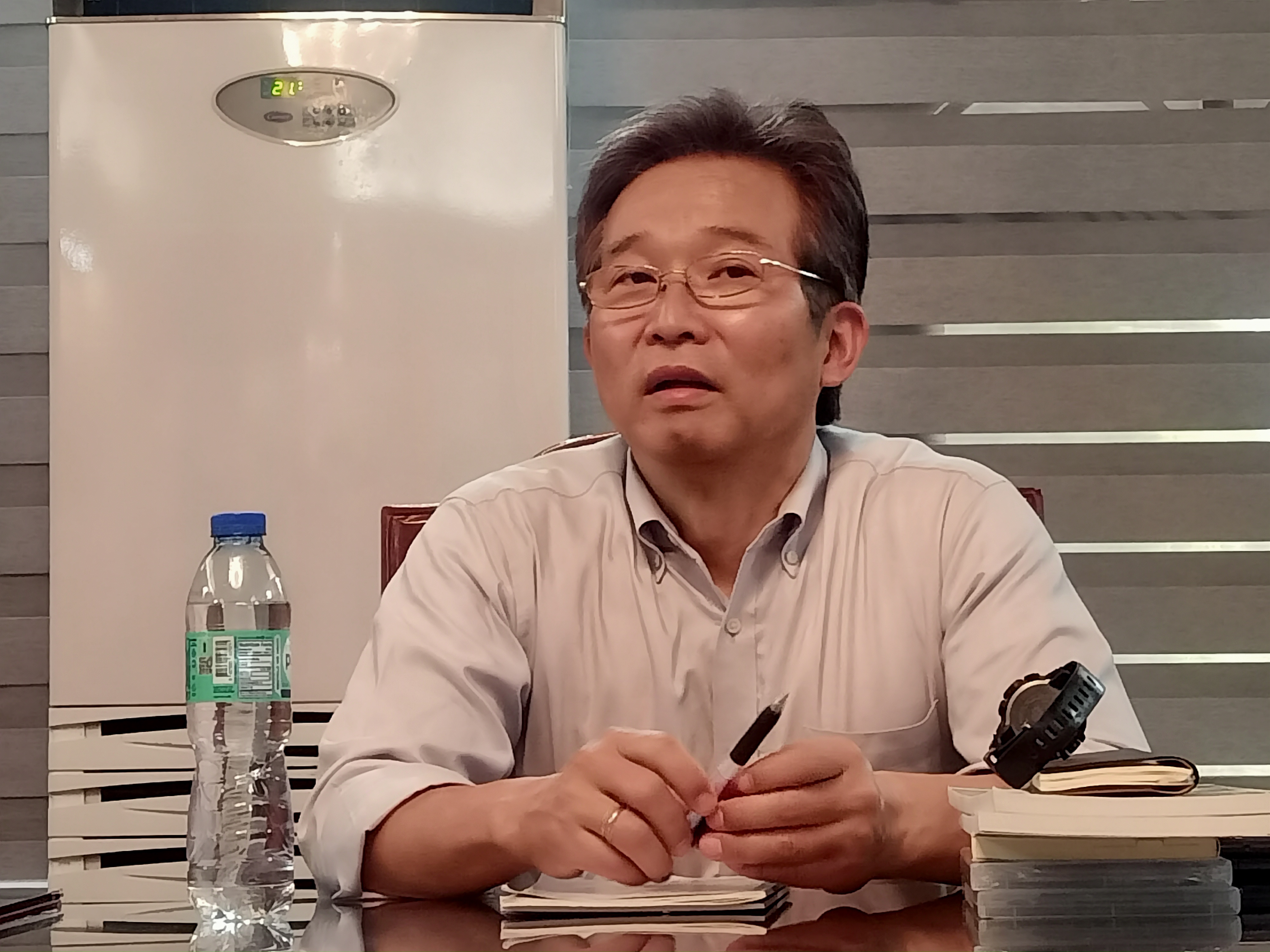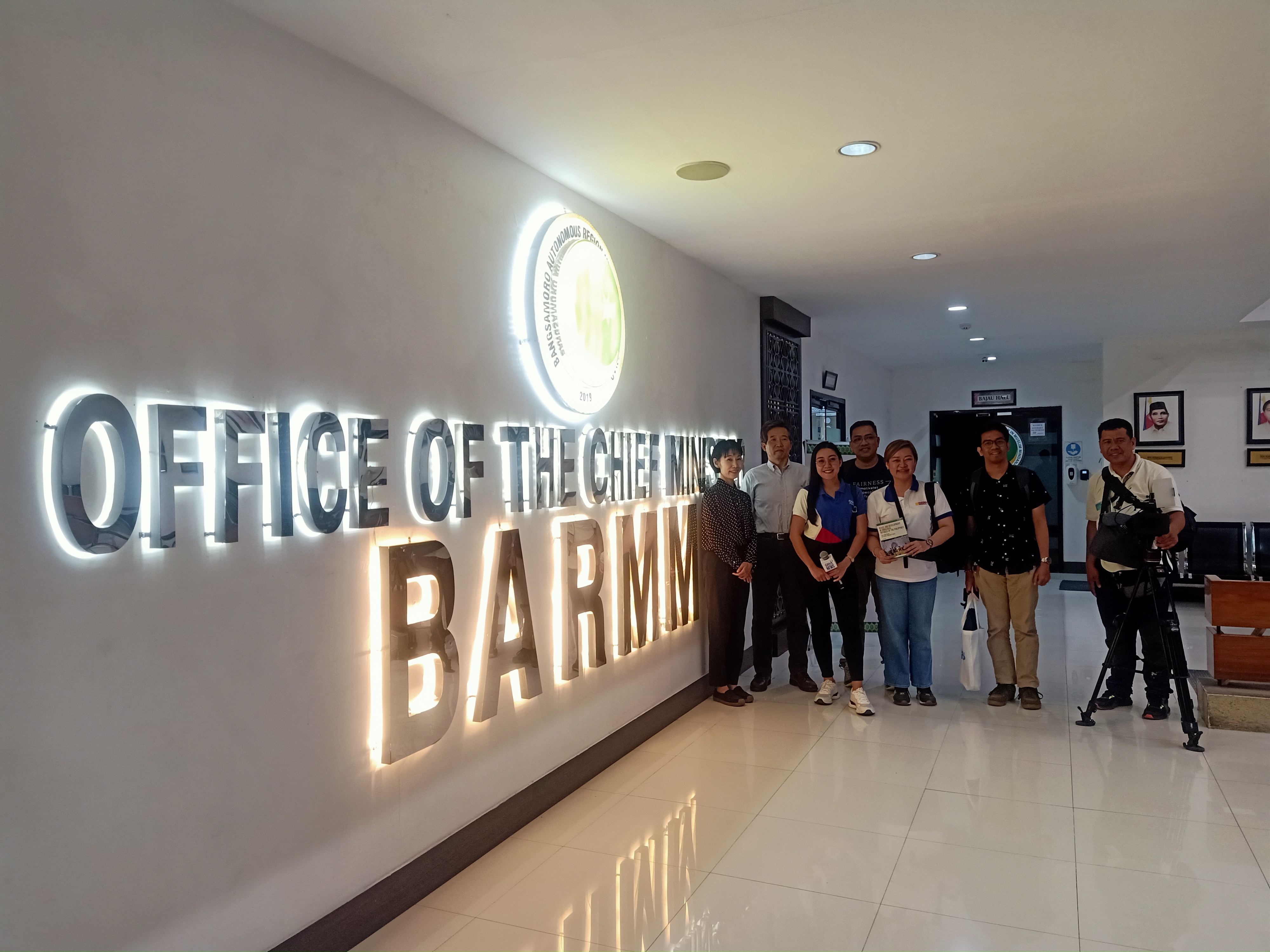Japan vows to see Bangsamoro peace process through to the end: 'Stay close to the people'
A closer look at how Tokyo is helping BARMM in its peace-building efforts

The Japanese government is committed to witness the success of the peace process in the Bangsamoro Autonomous Region in Muslim Mindanao (BARMM) despite the challenges it faces.
Acknowledging that there are still many things needed to be done, Mr. Naoyuki Ochiai, Japan International Cooperation Agency (JICA) Special Adviser to BARMM Chief Minister, said that Tokyo will “stay close” to the Bangsamoro people until lasting peace is finally realized in the southern part of the Philippines.
“We know that the reality is on the ground that’s why the Japanese government, through JICA, always try to deploy Japanese personnel on the field. But the problem is security as you know,” Ochiai told reporters at the Office of Chief Minister for BARMM in Cotabato City recently.
“Before we reach the reality on the ground, we always coordinate with the Philippine government, the police, and Armed Forces of the Philippines, as well as MILF and MNLF [Moro National Liberation Front], and those who occupy the areas. We always coordinate with local politicians of local government units and municipalities and barangays. Without their permission we can’t do anything on the ground,” he added.
Select members of the media went to the Office of the Chief Minister, BARMM in Cotabato City to learn about the progress of peace process in Mindanao.
Japan aid
The Japanese government has been involved in peace-building efforts in Mindanao since 1990, according to Ochiai. The first initiative came in the form of a loan by the Japanese government to the then newly-established Autonomous Region in Muslim Mindanao (ARMM) to establish an irrigation project in Cotabato City.
Ochiai, himself, entered JICA in 1991. He got deployed in Manila in 1996, and visited Cotabato City for the first time in the same year. That was also the year when the GPH and Moro National Liberation Front (MNLF) signed their final peace agreement.
“Almost [28] years ago, when I came down here, I was feeling tension. In the nighttime there was nobody walking alone,” he recalled.
Before the signing of the 1996 peace agreement, the MILF was established as a splinter group of the MNLF in 1984, as other leaders who had different goals for Moro liberation continued fighting the government.
In 2014, the MILF and GPH signed the Comprehensive Agreement on Bangsamoro (CAB), the final peace agreement between the two parties. In 2018, the Bangsamoro Organic Law (BOL) was passed, which paved the way for the creation of BARMM in 2019. A Bangsamoro Transition Authority (BTA) was formed to serve as the interim governing body of BARMM headed by the Chief Minister, Murad Ebrahim.
In his book “Peace and Development in Mindanao, Republic of the Philippines: The Long Road To Peace Through Trust,” Ochiai bared that the Japanese government provided a full-fledged support program for policy formulation and implementation, improvement of basic human needs, and peacebuilding and counter-terrorism efforts in Mindanao dubbed as the “Support Package for Peace and Stability in Mindanao” in 2002.
That same year, then JICA President Sadako Ogata visited the Philippines and vowed to pour in more support for peace-building initiatives in Mindanao. But in 2008, an outbreak of conflict in Mindanao occurred due to a setback in agreement over ancestral domains, forcing the withdrawal of representatives from Malaysia and Brunei to the International Monitoring Team (IMT).
The IMT is a third-party group created to monitor the ceasefire agreement between the GPH and MILF. Ochiai was part of this team at the time, along with other representatives from Japan, Malaysia, Brunei, Indonesia, Norway, and European Union.
‘Never withdraw’
“At that time, the Japanese government through JICA, the time of former [JICA] President Sadako Ogata, [she] instructed us [to] never withdraw, to stay,” Ochiai said.
“The policy of JICA is always to walk around close to the people, in this case the Bangsamoro people, the MILF and Philippine government. That’s why she said ‘no withdraw and stay close to the people.’ I think from that experience, we draw some confidence from the people on the ground,” he noted.

At present, Ochiai is serving as JICA’s special advisor to Chief Minister Ebrahim. Since Japan’s provision of a support package for Mindanao in 2002, their government has launched more than 100 projects worth USD515 million or P26 billion for peace-building initiatives in this part of the country.
In 2025, the first parliamentary election will be held in BARMM and a new set of officers will come in to replace the Bangsamoro Transition Authority (BTA).
“After the election in 2025, we don’t know who will win. This is not our concern, the decision is yours, the decision is not ours. You will choose your future next leaders and we will accept whoever will become the leaders. We are ready to adapt ourself to the new leaders,” Ochiai said.
One thing is for sure, according to Ochiai, the government of Japan will assist the BARMM in capacitating itself and its people so that it would be a successful parliamentary government in the coming years.
He likened Japan and Mindanao in the sense that both are implementing a parliamentary form of government. Before the Meiji Restoration in 1850s, he said Japan had shogun or military rulers which adopted the feudal system of governance but during the Meiji revolution, the Meiji government had been based on parliamentary political system.
“Likewise, the BARMM government is introduced with a parliamentary system, the country of the Philippines is not a parliamentary system, it’s a presidential system. The BARMM BTA cannot run from central government as it is a parliamentary government system,” he explained.
“As senior adviser to BTA Chief Minister, I’m trying to give them about the experience of Japan especially in the 19th century. I provide them our experiences of nation-building as parliamentary system of government. Of course, we have good examples and dark histories. [From] time to time, I talk to Chief Minister about our history,” he continued.
“Second is the experience after the reconstruction of World War II. In the World War II, our country was totally destroyed, especially in Hiroshima and Nagasaki where the atomic bomb was brought. The BTA Chief Minister as well as other cabinet ministers know how Japan rebuilt after the WW2,” Ochiai shared, recalling how members of the BTA parliamentary went to Hiroshima and Tokyo last year to learn about more of Japanese history, culture and system of governance.